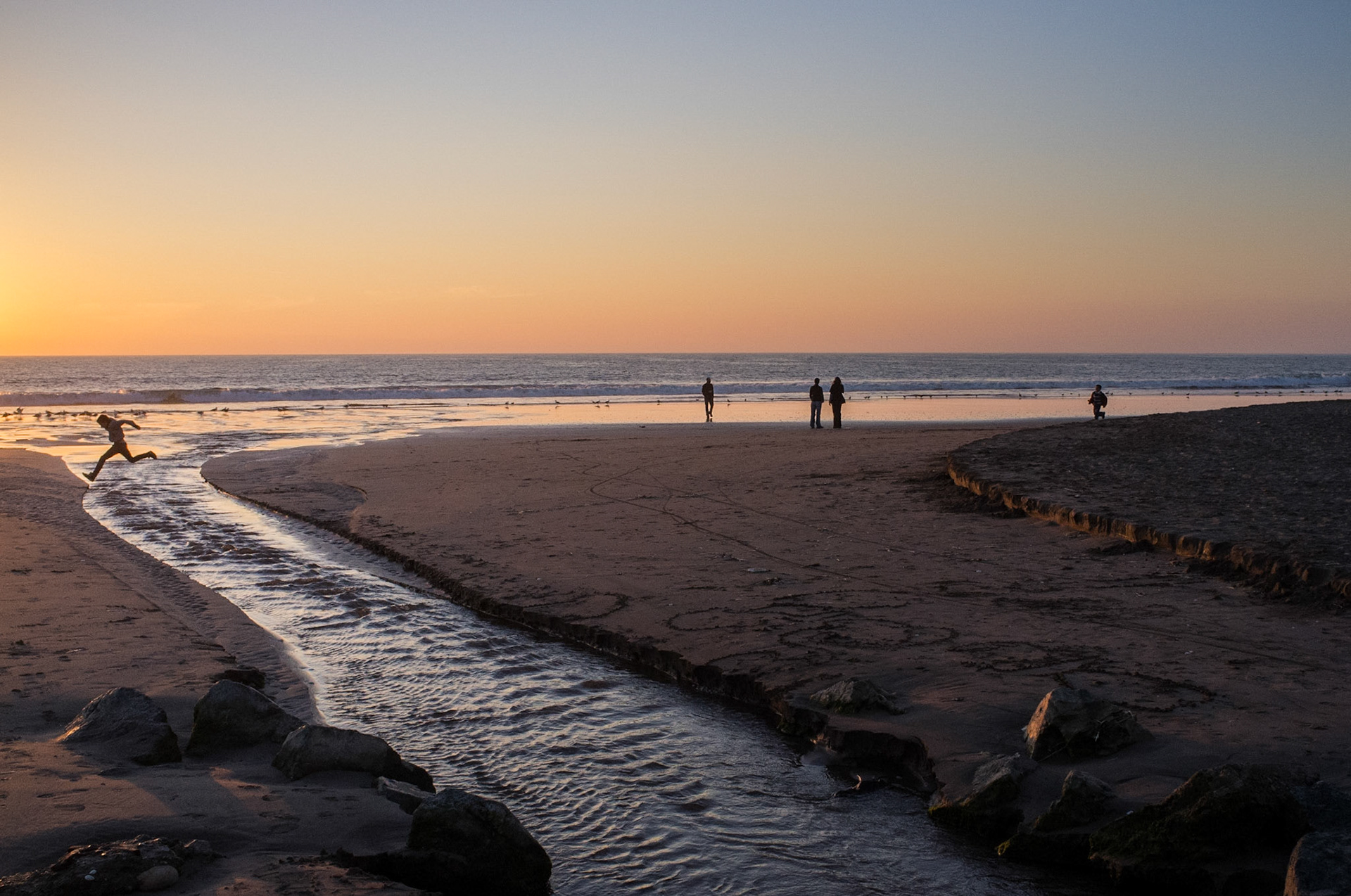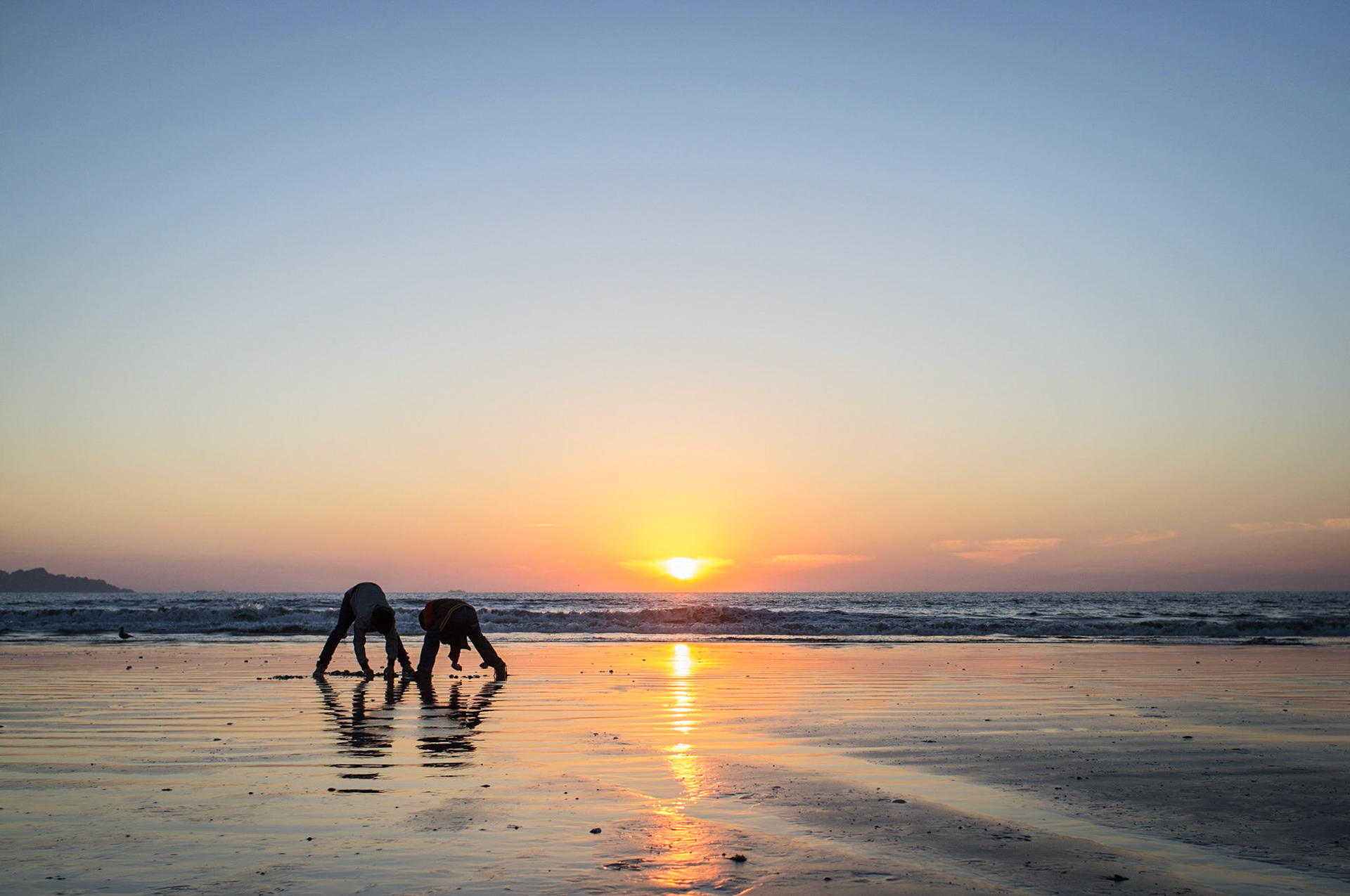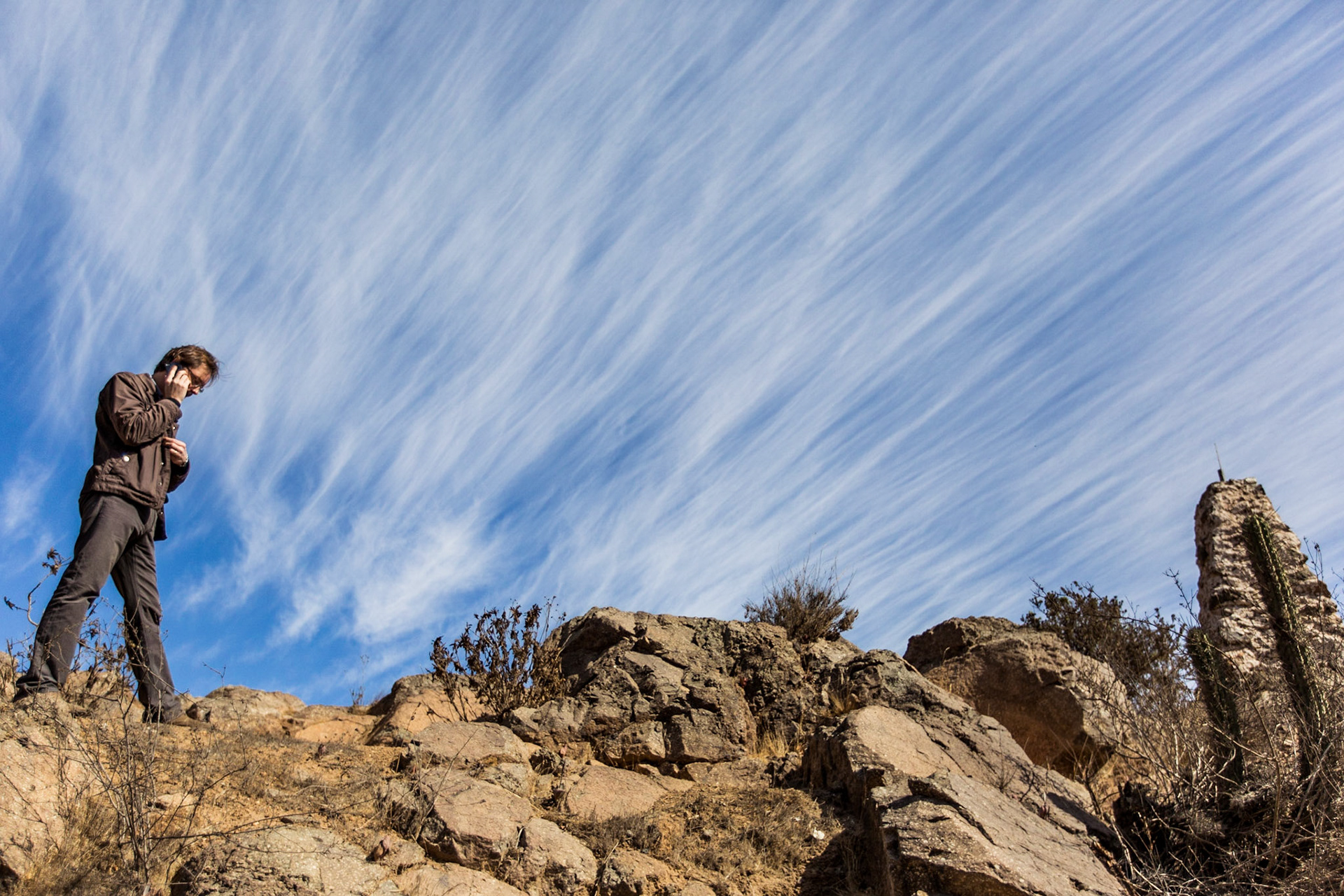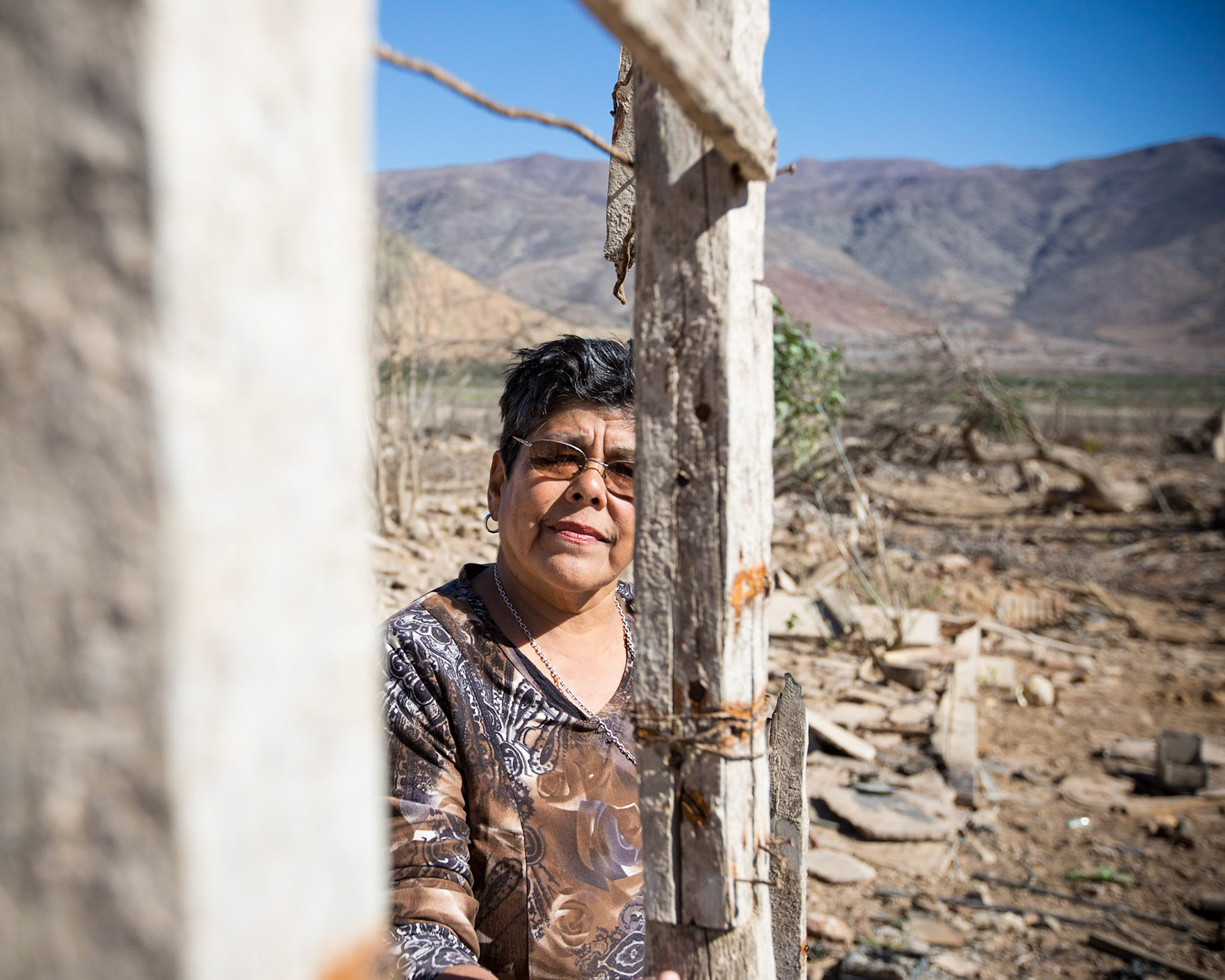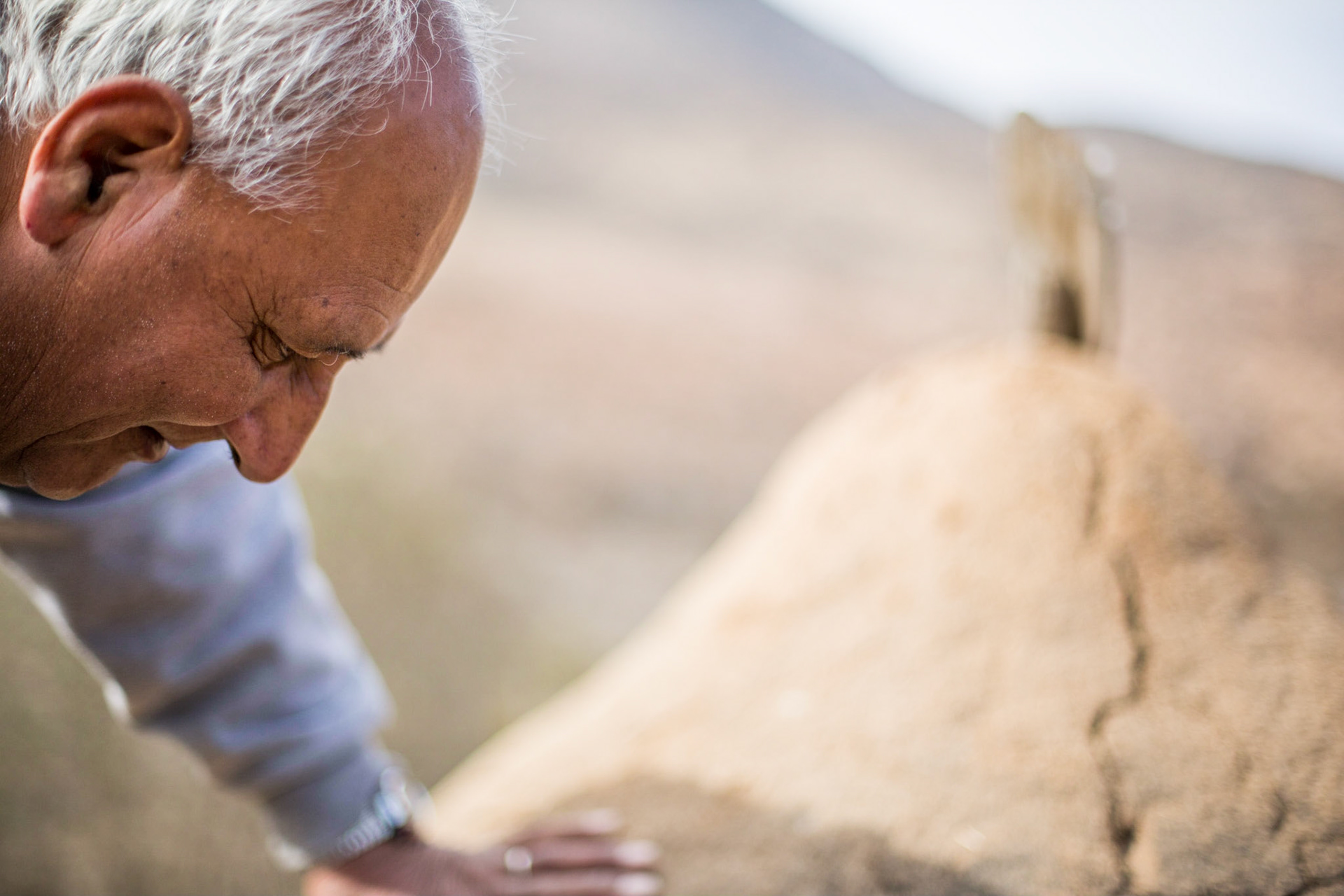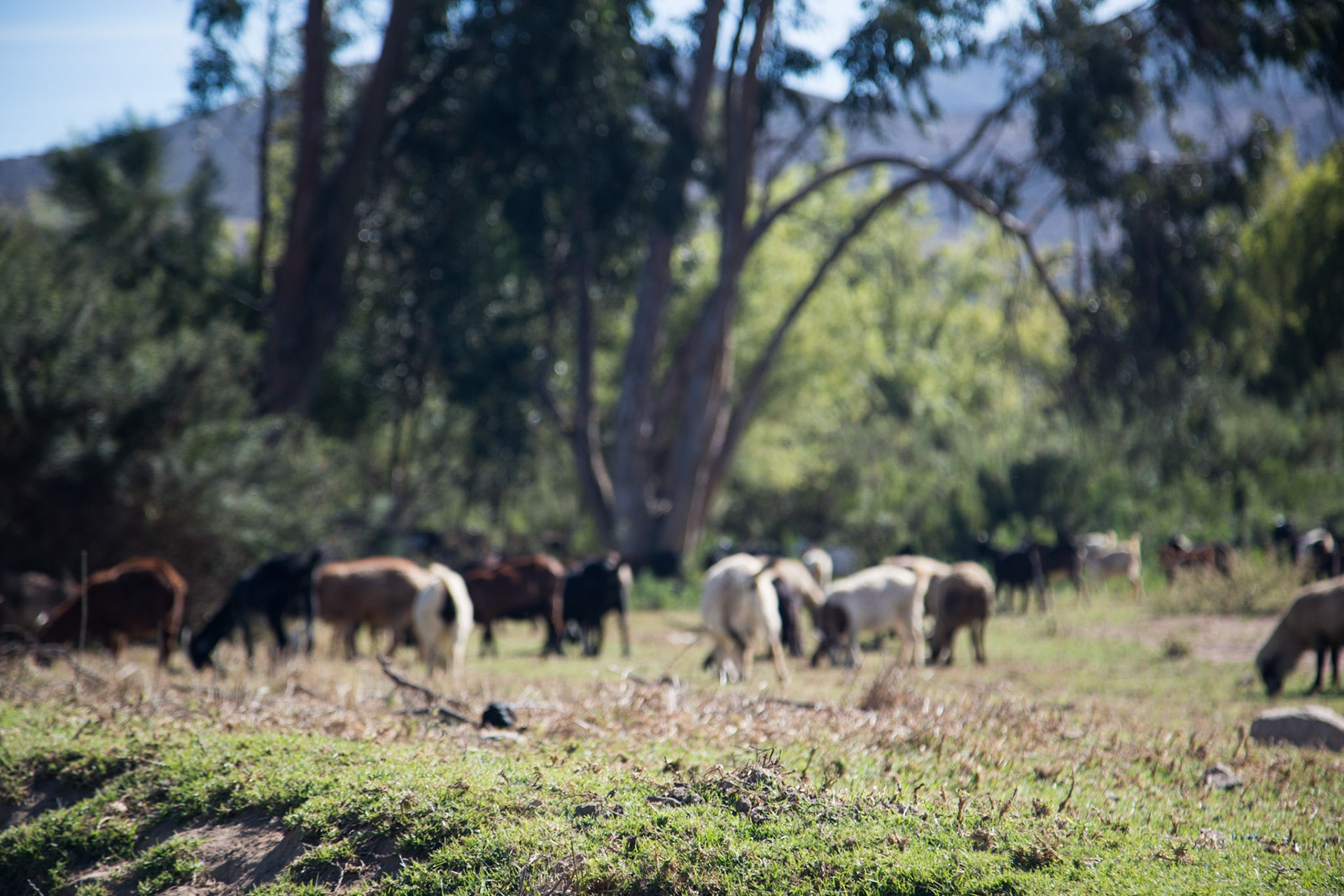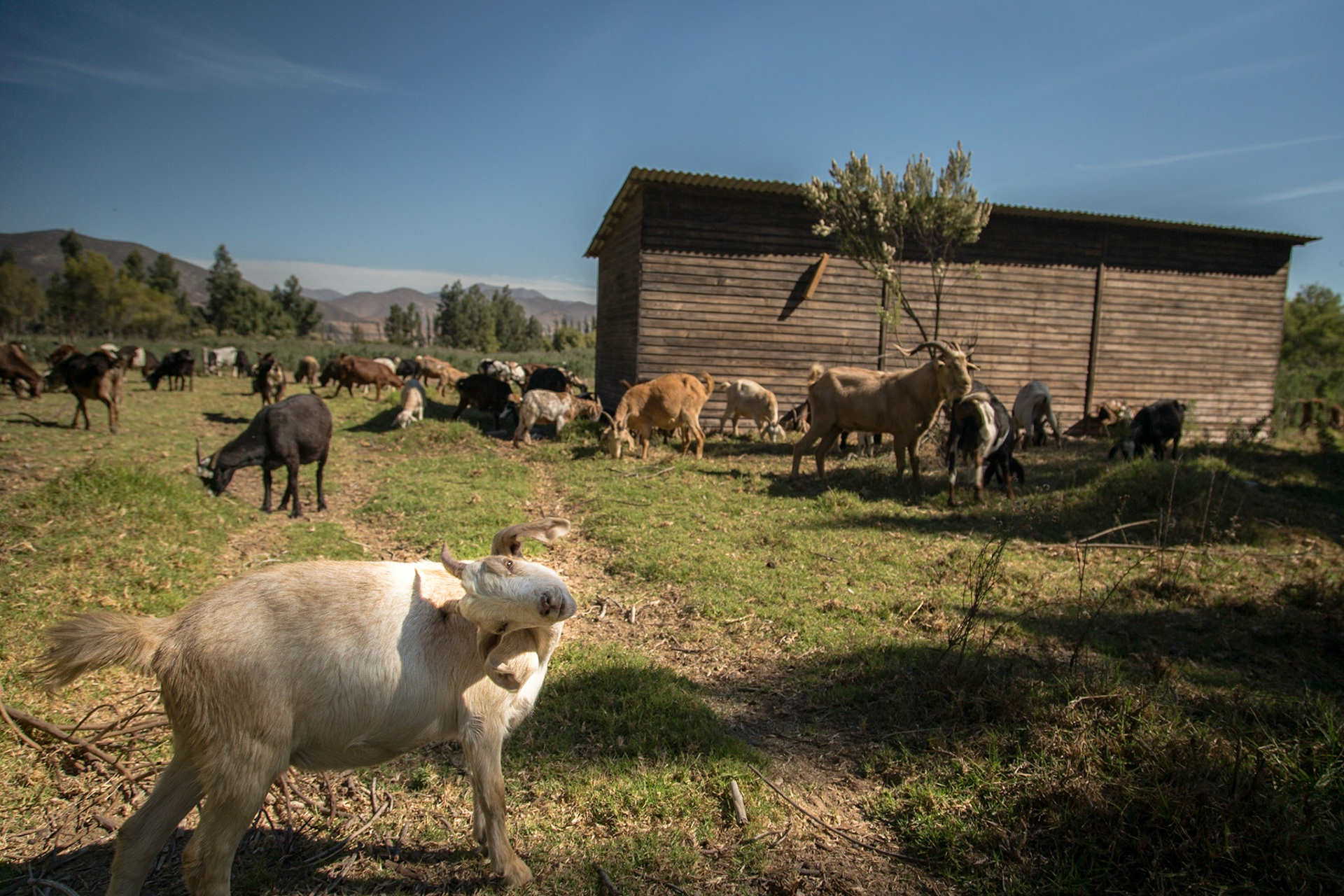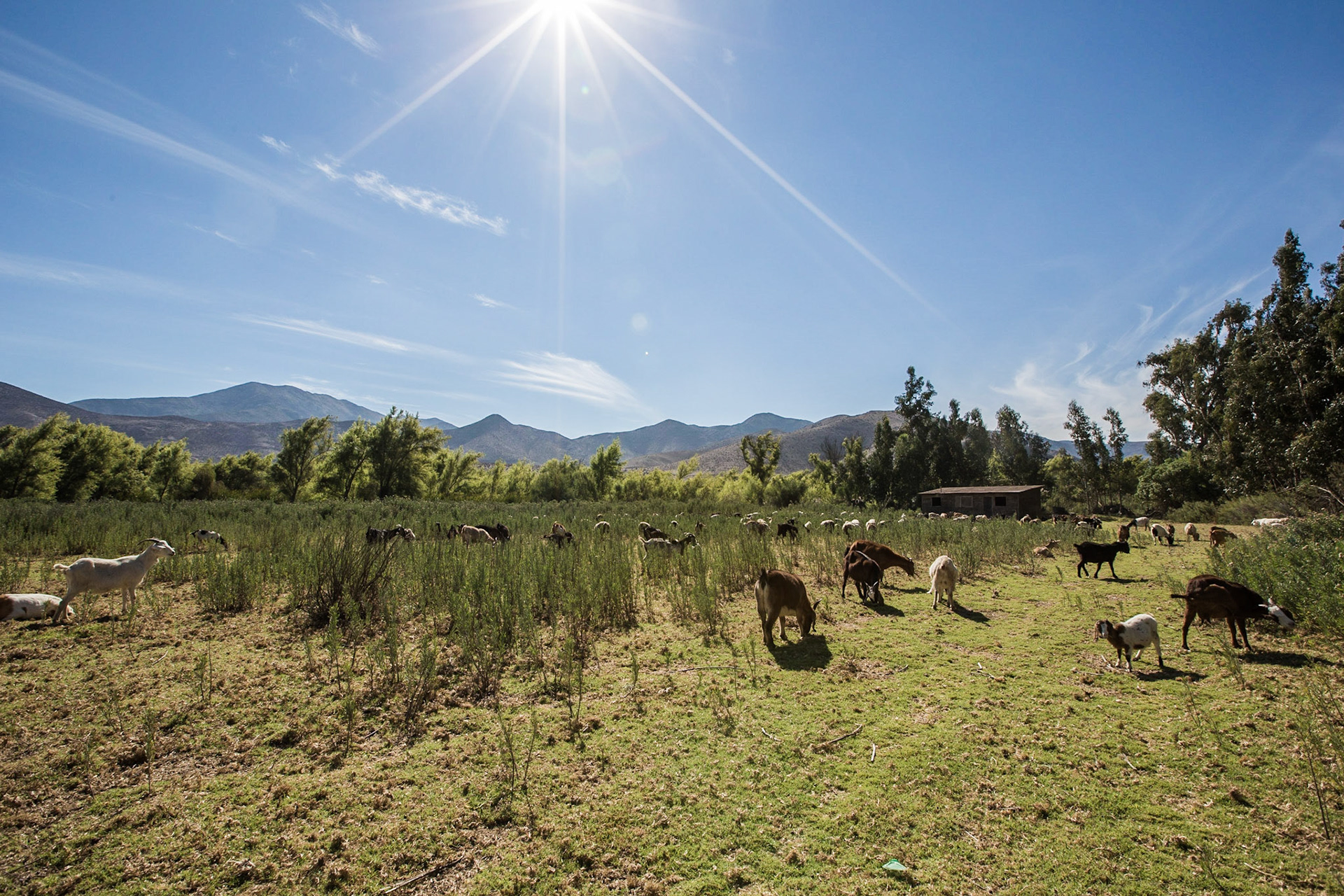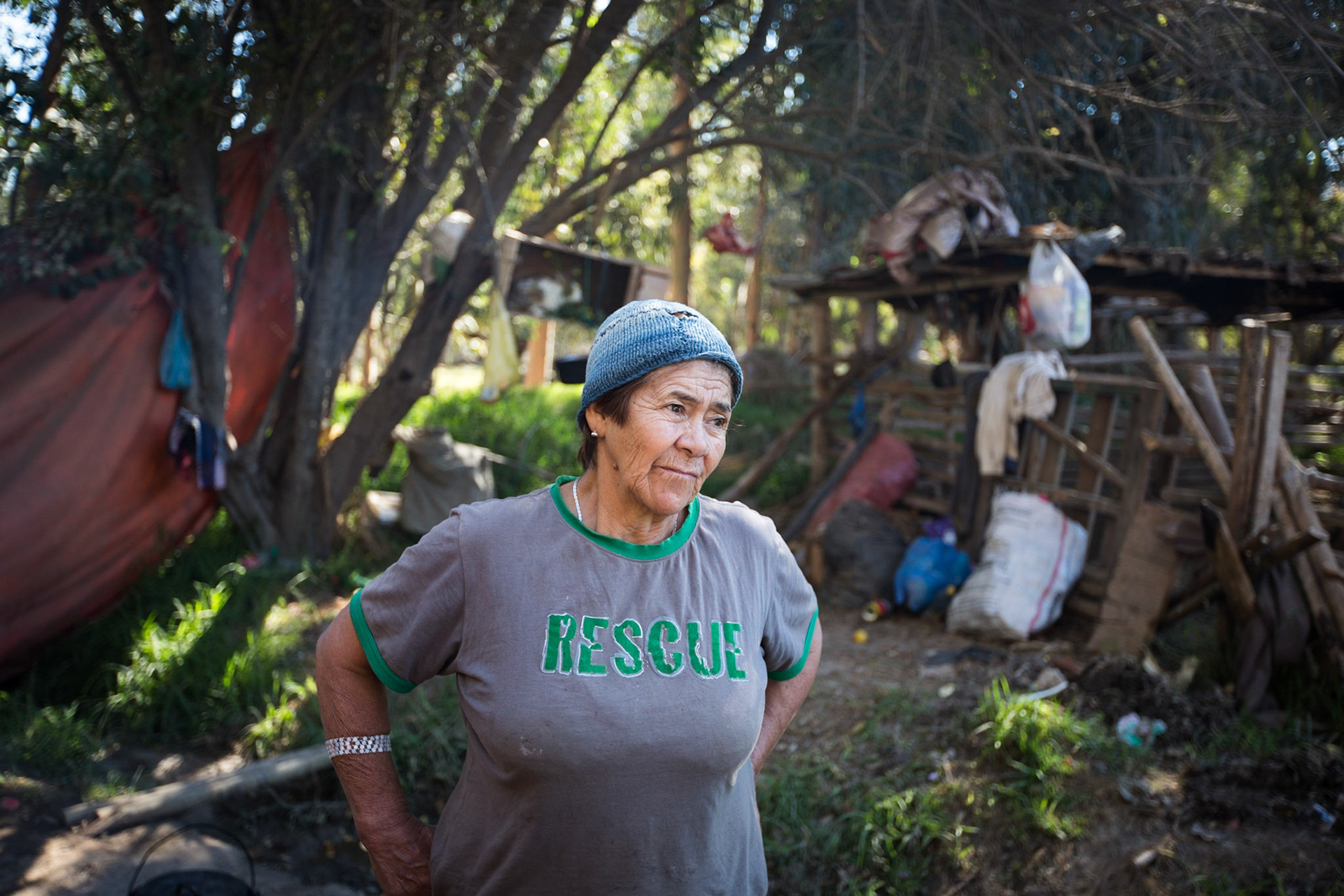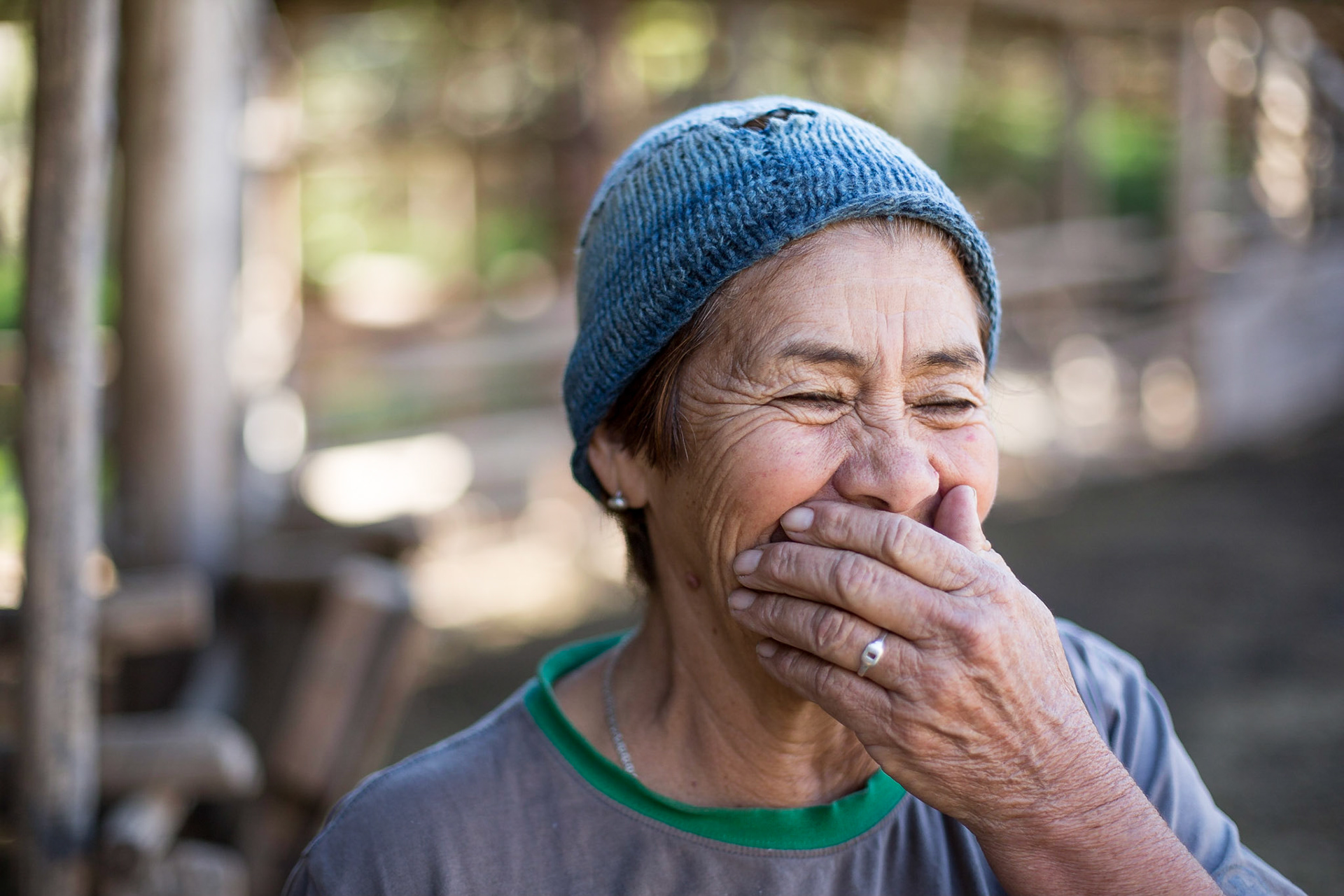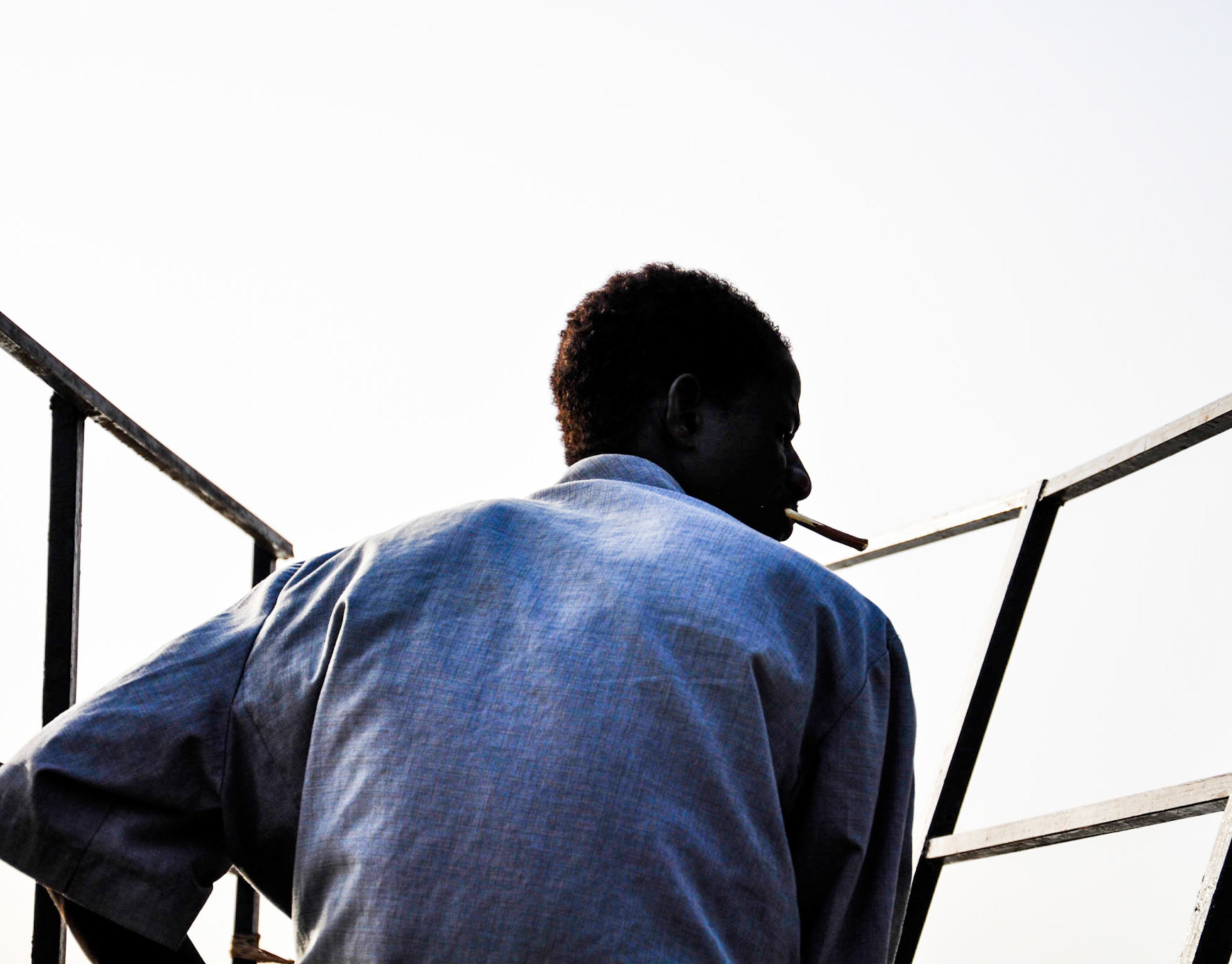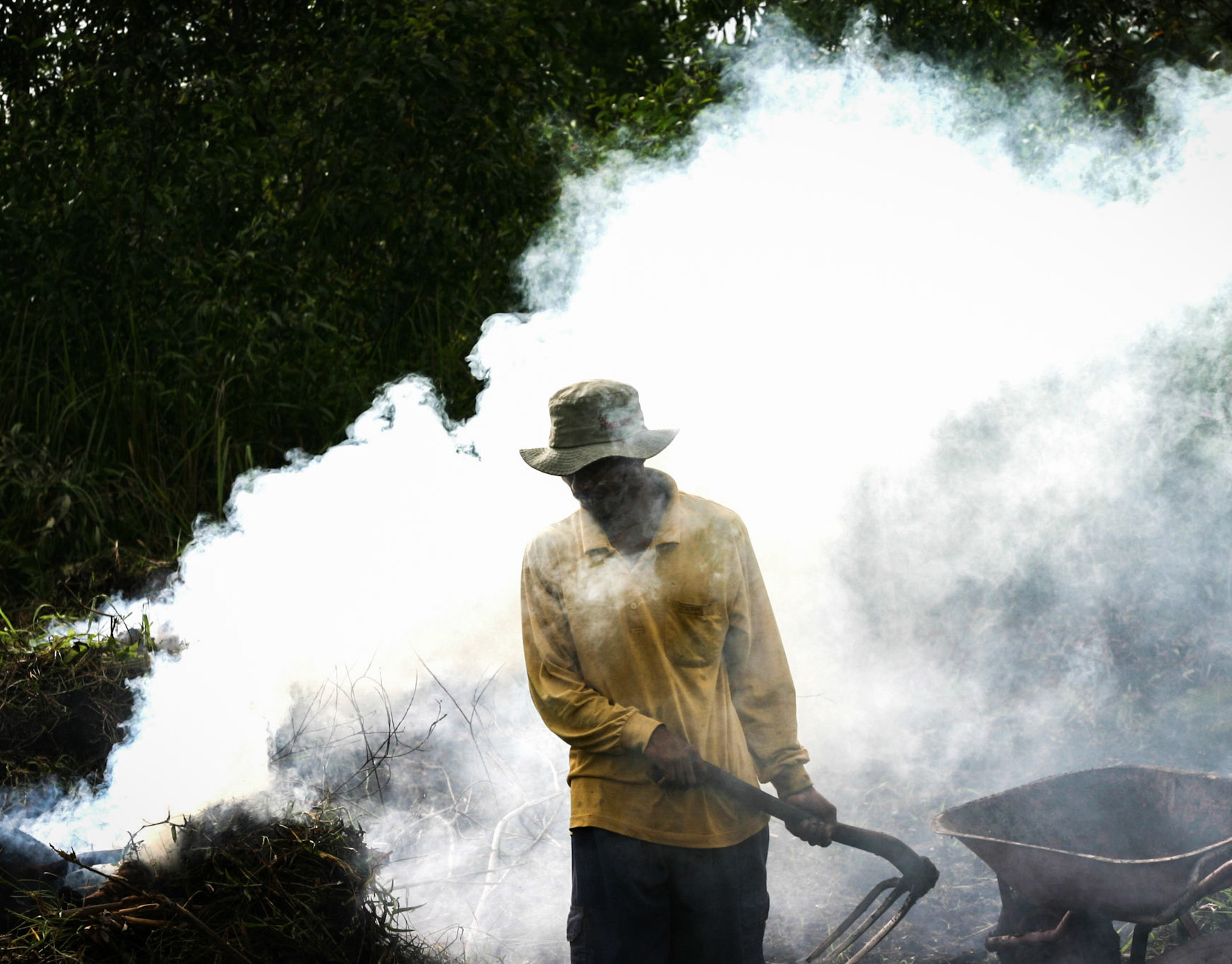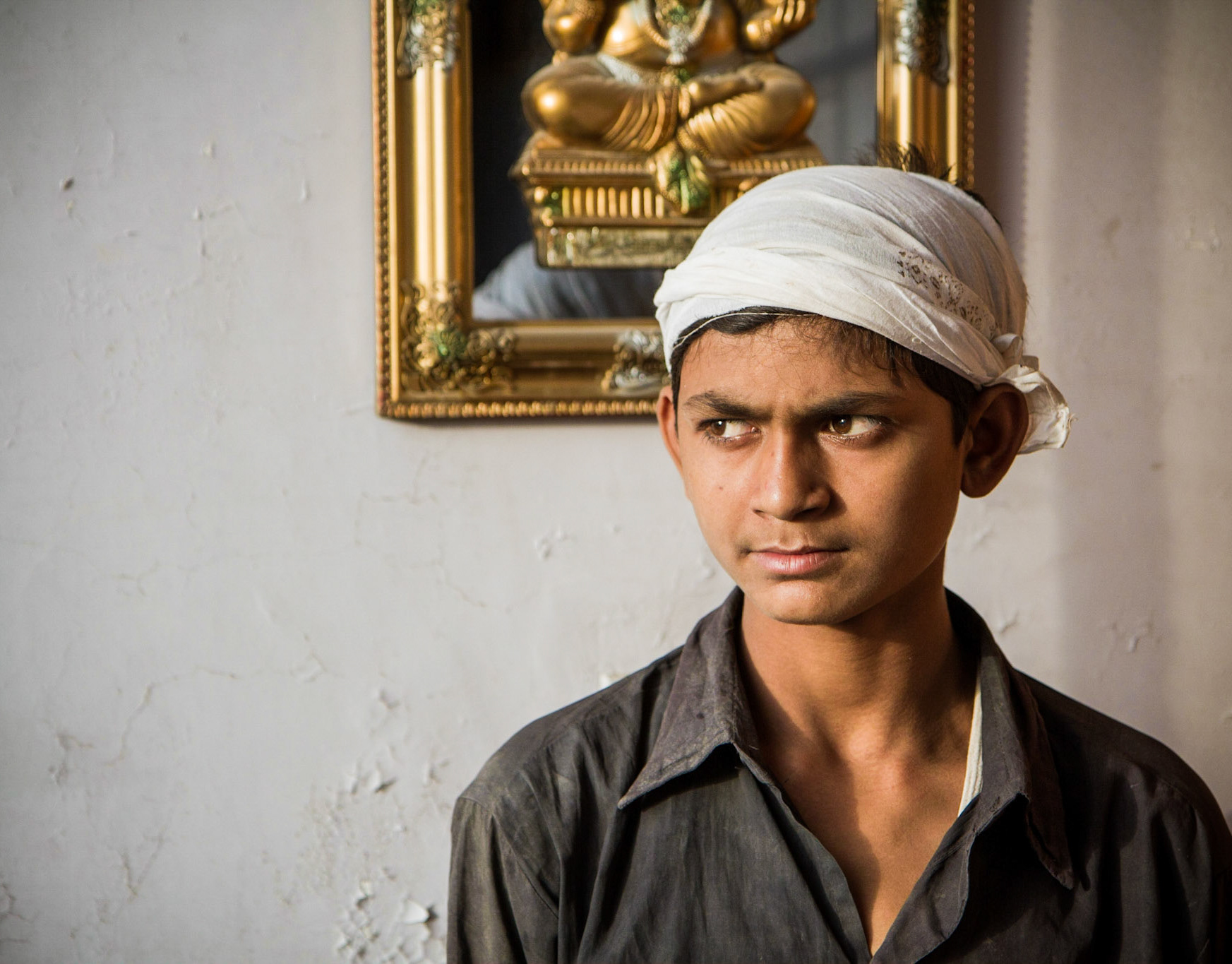
A boy jumps over a stream that drains into the Pacific.

La Serena, Chile. Two boys dig for clams and other intertidal critters on the beach. Taken April 28, 2013.

La Serena, Chile. Koen Verbist, a scientist at UNESCO, is my guide and co-conspirator in Coquimbo. Verbist has been a key point of contact for our work in Elqui and has studied and published on the climate variability of the region with IRI scientists. Taken April 29, 2013.

Gualliguaica, Chile. The original village of Gualliguaica, where Natalia Edith Codoceo Flores lived until the 1990s, was flooded when the Puclaro Dam was built. But the long lasting drought has diminished the reservoir to 10% (or less) of it's capacity. The entire old village is now exposed, as the "reservoir" essentially receded back to the original bed of the Elqui. Taken April 29. 2013.

Gualliguaica, Chile. The original village of Gualliguaica, where Natalia Edith Codoceo Flores lived until the 1990s, was flooded when the Puclaro Dam was built. But the long lasting drought has diminished the reservoir to 10% (or less) of it's capacity. The entire old village is now exposed, as the "reservoir" essentially receded back to the original bed of the Elqui. She stands inside an old door frame of a once-submerged house. Taken April 29. 2013.

Gualliguaica, Chile. The Puclaro Reservoir is at around 10% of it's peak in 2009, indicated by lines on the mountain in the background. The dam is in the distance. Without the reservoir, farmers, mines and other water users have lost one of their key buffers against drought. Taken April 29, 2013.

Gualliguaica, Chile. Natalia Edith Codoceo Flores points to the original village of Gualliguaica, where she lived until the 1990s before it was flooded by the Puclaro Dam. A long lasting drought has diminished the reservoir to 10% (or less) of it's capacity. The entire old village is now exposed, as the "reservoir" essentially receded back to the original bed of the Elqui. Taken April 29, 2013.

Elqui River Valley, Chile. A goat herder, Modesto Geraldo and his family represent one of the most drought-vulnerable communities in Coquimbo. Taken May 1, 2013.

La Serena, Chile. Goat herding is a traditional livelihood in the drylands of Coquimbo, Chile. These goats are pasturing very near the Elqui River. Taken May 1, 2013.

La Serena, Chile. Goat herding is a traditional livelihood in the drylands of Coquimbo, Chile. These goats are pasturing very near the Elqui River. Taken May 1, 2013.

La Serena, Chile. Goat herding is a traditional livelihood in the drylands of Coquimbo, Chile. These goats are pasturing very near the Elqui River. Taken May 1, 2013.

La Serena, Chile. Rosa Elvida Rivera and her family herd hundreds of goats in Coquimbo. She tells us she lost nearly two hundred animals because of drought. May 1, 2013.

La Serena, Chile. Rosa Elvida Rivera and her family herd hundreds of goats in Coquimbo. She tells us she lost nearly two hundred animals because of drought. May 1, 2013.

The Elqui River valley in Coquimbo Chile is agriculturally very productive, but only in areas that receive irrigation, such as these vineyards. Taken May 1, 2013.
